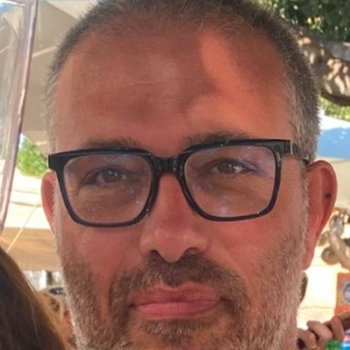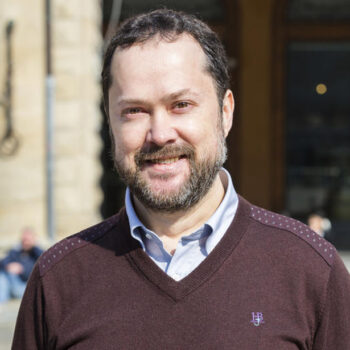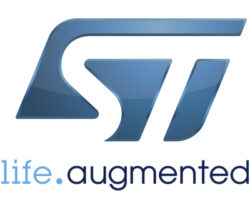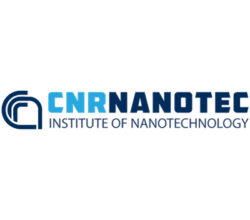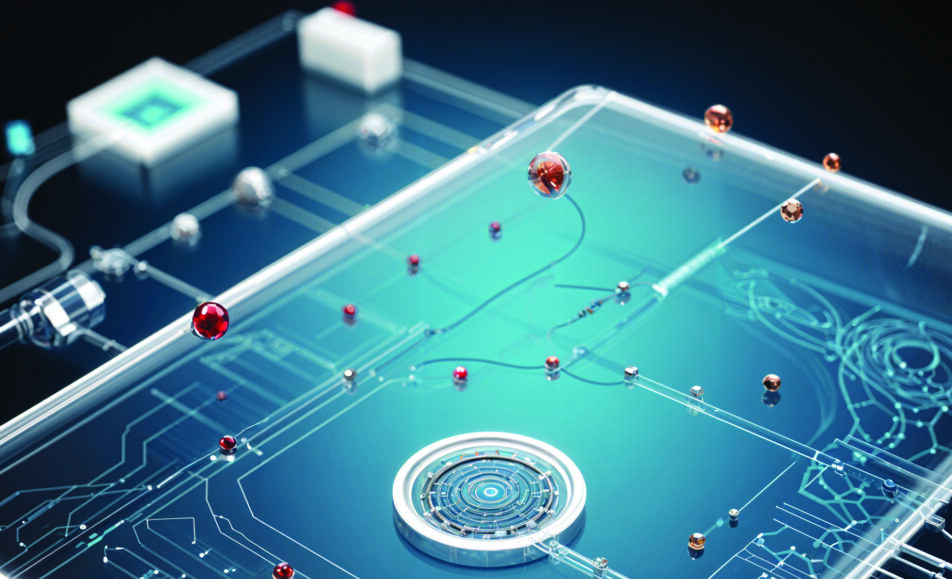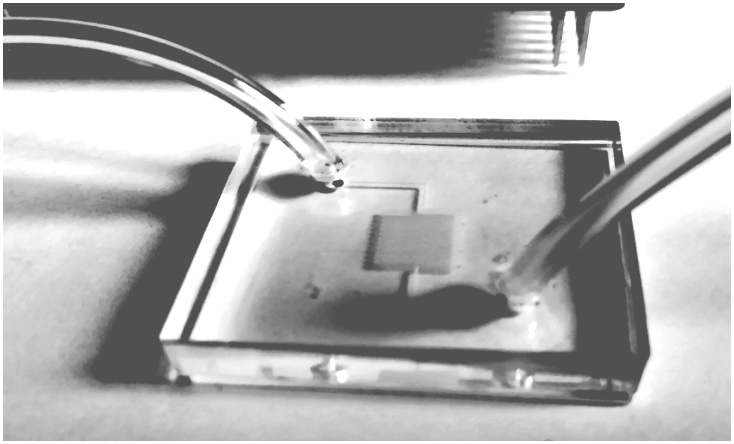
EMERGING AND DISRUPTIVE NEXT-GENERATION TECHNOLOGIES: MATERIALS, MICROFLUIDICS AND SENSING FOR BIOMEDICINE
EDGE-Tech Workshop will be focused on new, emerging and distruptive technologies with applications at Point-Of-Care. International speakers will share their experience in the field of sensors, chemistry and microfluidics as well as technological transfer and project management strategies. In the frame of EU SMILE-Attract project, the event is organized by CNR NANOTEC an STMicroelectronics. A Special Issue on Micromachines (ISSN 2072-666X) will host papers coming from EDGE-Tech: https://www.mdpi.com/journal/micromachines/special_issues/Technologies_POC
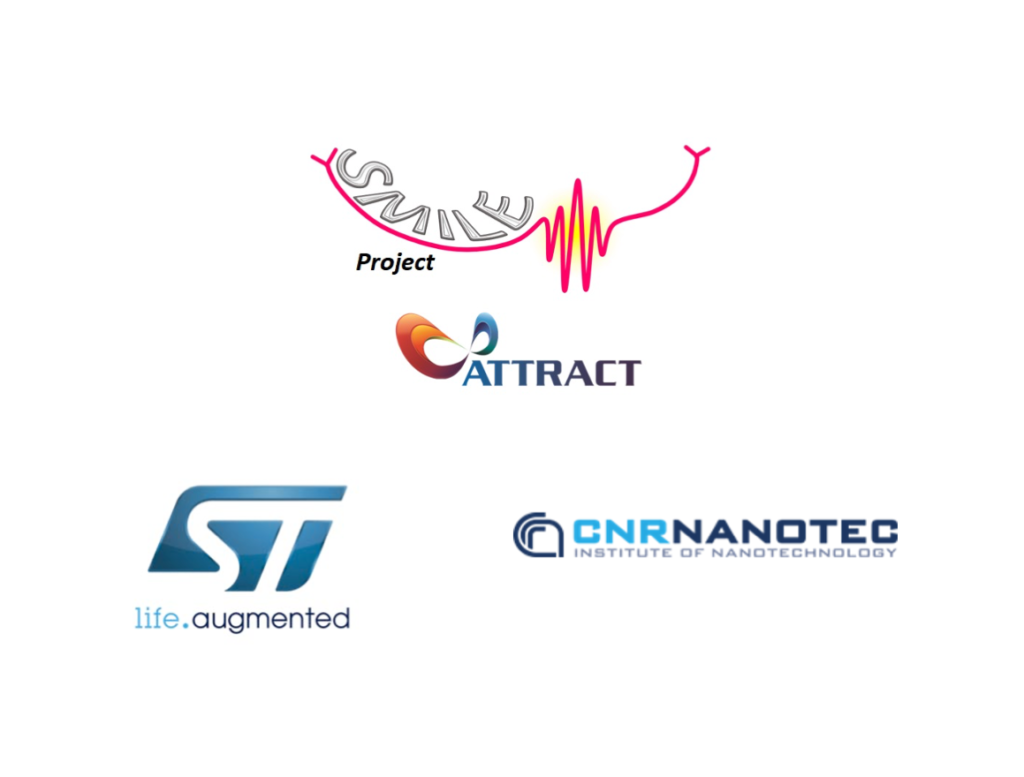
SMILE-Attract Project
SMILE project is a ATTRACT/EU funded project aiming to the development of a low-cost device for the early screening of oral cancer, a disease which is still highly aggressive if diagnosed at a late stage.
SMILE project: SAW-MIP Integrated device for oraL cancer Early detection
DR. MARIA SERENA CHIRIACÒ
CONTACT: mariaserena.chiriaco@nanotec.cnr.it
Read Abstract
The main objective of SMILE Attract project is the development of a low-cost device for oral cancer early screening with features of high sensitivity, specificity and ease of use, with the aim to reach a large audience of possible users and realize a real prevention of the disease using a patient-friendly approach considering biomarkers from saliva, a biological fluid easy to be collected and in full proximity with primary oral cancer site. Moreover, saliva is a fluid purer than blood, considering that no other cells or vesicles are contained apart from those shedding from oral tissues. To achieve this goal SMILE project has dealt with combining a highly sensitive transducer based on Surface Acoustic Waves with smart materials, Molecularly imprinted polymers, the so-called artificial antibodies, with properties of high selectivity. The possibility to move into real practice has been explored using artificial saliva, which allowed to test our platform mimicking real samples.
Portable surface plasmon resonance sensor with self-referencing, tunable penetration depth and ultrahigh enhancement of fields suitable for point of care applications
PROF. IBRAHIM ABDULHALIM
CONTACT: abdulhlm@bgu.ac.il
Read Abstract
Variety of innovative photonic structures and reading methodologies were developed in our group during the last years, based on which a miniature surface plasmon resonance system for bio and chemical sensing is built. This involve: (i) a self-referenced sensor based on enhanced optical transmission through metal nanoapertures, (ii) a self-referenced ultra-large penetration depth SPR sensor tunable so that small and large bioentities can be detected, (iii) a TIR sensor in which the angular edge is converted into a dip with high figure of merit, (iv) a self-referenced SPR sensor based on thin dielectric grating on top of thin metal film, (v) enhanced sensitivity by combining the metal film with high index dielectric layers, (vi) simplified polarimetric approach that relaxes the tolerances on the metal layer thickness and (vi) ultrahigh field enhancement configurations by coupling extended surface waves to localized ones. The self-referencing provides a more stable measurement compensated for thermal drifts. High penetration helps in detecting large bioentities such as bacteria and cells. Figure of merit
is defined as the ratio between the sensitivity to the width of the resonance dip; hence its enhancement also improves the detection limit.
Combining all these properties in one system together with a compact reading methodology with unique image processing allows refractive index sensing limits down to 10-5 and with some effort to 10-7. The system is provided with built-in software that monitors the refractive index or concentration in solutions continuously with response time as short as 16msec and provides kinetic binding analysis.
Microfluidics for novel diagnostics and therapeutics
PROF. ZULFIQUR ALI
CONTACT: z.ali@tees.ac.uk
Read Abstract
Microfluidics has an important role to play in the diagnosis and management of diseases. The presentation will highlight the use of Cavity Enhanced Absorption (CEA) and impedimetric detection for use within low cost point-of-care diagnostics. In CEA detection the high sensitivity is achieved through increasing the pathlength by locating the sample between two highly reflective dielectric mirrors. The light reflects between the two mirrors to form an optical cavity which magnifies the optical absorption effect. A very small amount of light exits from the mirror and this is measured to give the CEA signal. Impedimetric detection has the advantage as a potentially label-free approach for monitoring ligand receptor binding. The use of microfluidics for the development of low cost device for carrying out culturing of multiple cell lines for high throughput screening of anti-cancer compounds and for use in the optimisation of protein production for therapeutics will be discussed.
What we learned from the ATTRACT Phase 1 project?
DR. ROMAIN MULLER
CONTACT: r.muller@cern.ch
Read Abstract
As the ATTRACT Phase 1 project is coming to an end, let’s look at some key learnings collected along the way on the portfolio of projects and how ATTRACT helped them to advance breakthrough technologies in detection and imaging.
Ultimately sensitive potentiometric organic bioelectronic sensors
PROF. LUISA TORSI
CONTACT: luisa.torsi@uniba.it
Read Abstract
The rising interest in ultra-highly sensitive clinical assays, stems from the foreseen advantages that are connected with technologies capable of tracking a biomarker down to the physical limit. In fact, such technologies could virtually quantify the transition of an organism from being “healthy” to being “diseased”. This can open to the possibility of achieving the earliest possible diagnosis. The integration of such bioelectronic sensors into a wearable platform would enable precision medicine to be implemented for the convenient monitoring of a person’s health status. From a more fundamental point of view, the sensing of single-events faces the ultimate challenge of counting each molecule in a solution and opens to the study of rarer events that are otherwise lost in the background noise when the average most probable response of a population of countless molecules, is measured. Label-free single-molecule detection has been achieved so far by means of nanometric transducing devices that however, because of the small interaction cross-section, do not enable to measure a single molecule into a too large microliter volume. Several three-terminal organic bioelectronic structures have been proposed so far to address the needs for a variety of biosensing applications. The most popular ones utlized organic field-effect transistors immobilizing a layer of bio-recognition elements that are operated in an electrolyte that enables one to selectively detect both proteins and genomic analytes. These features along with the foreseen low-cost for their production, make them very appealing for point-of-care biomedical applications. This lecture aims at providing a systematic comparison between the potentiometric and amperometric electrochemical sensors and their organic bioelectronic transistors counterparts, showing why the latter can sense at the single-molecule level. Moreover, material-science and devices-operational aspects underpinning the sensing-principles of the assessed technologies critically prioritizing them according to scrutinized figures-of-merit such as limit-of-detection, need for a labelling-step and feasibility to assay biofluids.
Introduction to MIP Diagnostics
DR. FRANCESCO CANFAROTTA
CONTACT: francesco.canfarotta@mip-dp.com
Read Abstract
MIP Diagnostics is a leading commercial supplier of nanostructured molecularly imprinted polymers (nanoMIPs). NanoMIPs, often called plastic antibodies or synthetic receptors, are synthetic alternatives to antibodies used in medical diagnostics, industrial sensors and bioprocessing purifications and separations. Our proprietary technology includes a novel method to produce nanoMIPs which circumvents the drawbacks of traditional Molecularly Imprinted Polymer manufacturing methods. NanoMIPs offer significant advantages in terms of stability and robustness, as well as lead time. NanoMIPs can withstand high temperatures and pressures, negating the need for a costly cold chain. Furthermore, nanoMIPs can be easily integrated with detection functionalities (e.g. coloured, electro-active, fluorescent, etc.), which allows them to be tailored and customised according to the final application. MIPs have been created to small molecules, metabolites, peptides and proteins, viruses and more. Targets are not limited to those that elicit an immune response or toxicity, and no animals are used in the manufacture of MIPs.
Celector: the cell chromatography
PROF. ANDREA ZATTONI
CONTACT: andrea.zattoni@unibo.it
Read Abstract
Population ageing, injuries, cancer surgery: cell-based regenerative therapies are strongly expanding. We need new technologies for quality control and non-invasive isolation of cells used for therapy, for maximum safety towards new clinical applications.
Celector® is a new instrumentation based on a patented principle: Non-Equilibrium Earth-Gravity Assisted Field Flow Fractionation (NEEGA-FFF), that we called cell chromatograpy. Celector® is able to characterize and sub-fractionate cells based on their solely physical characteristics such as dimension, density, morphology and rigidity. Cells are injected into a capillary device in sterile conditions and they are separated in a label-free mode. At the device outlet, a camera is placed to record the eluted cells and an imaging software generates a specific profile (cells vs time). Cells with different elution time can be collected in separate fractions and used for further studies or direct applications.
Several applications show how the multipotent component from heterogeneous populations of stem cells can be selected without extra manipulation. This enriched population can be used for several applications in basic and applied research. These results show an interesting technology to obtain homogeneous and “good” cell therapy products to improve the success of regenerative medicine applications.
Closing remarks
DR. MARIA SERENA CHIRIACÒ, DR. FRANCESCO FERRARA, DR. ELISABETTA PRIMICERI
CONTACT: mariaserena.chiriaco@nanotec.cnr.it, francesco.ferrara@st.com, elisabetta.primiceri@nanotec.cnr.it

